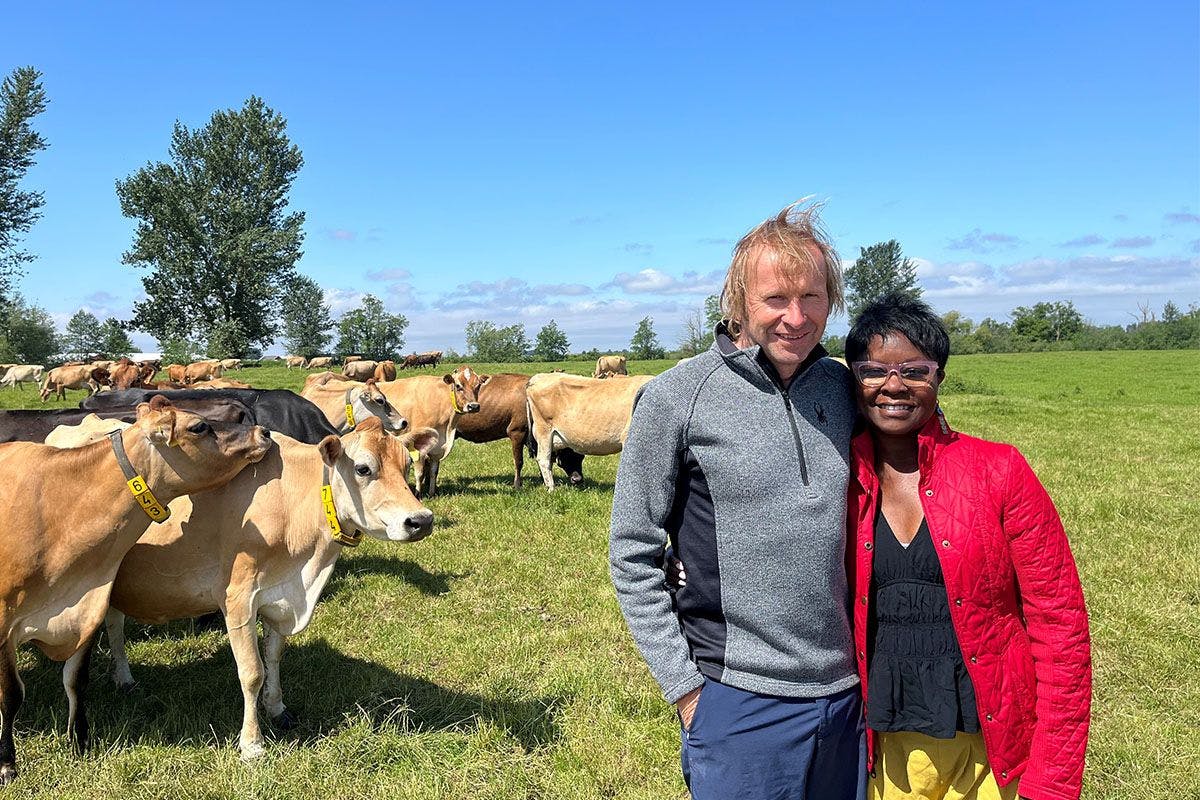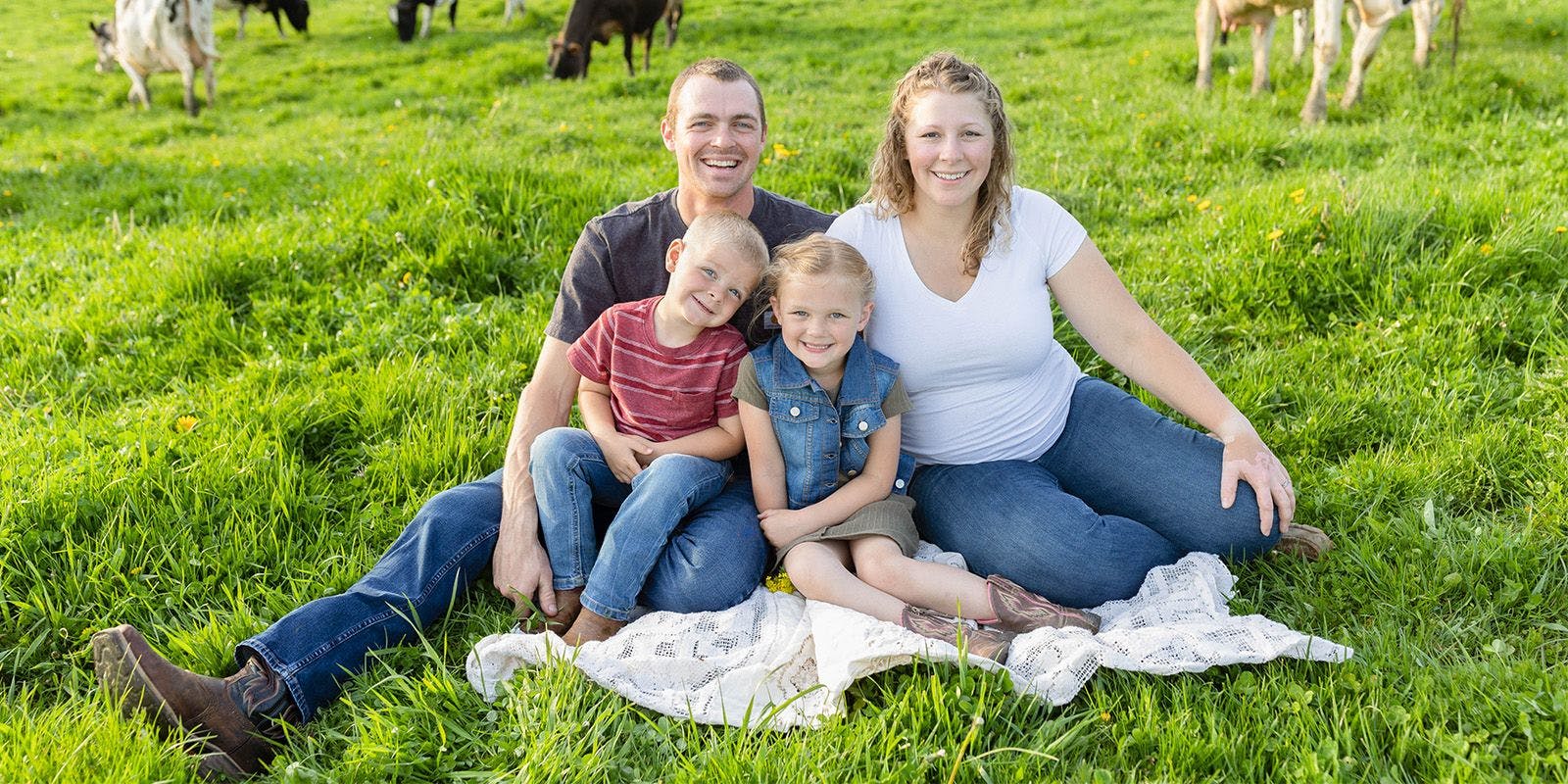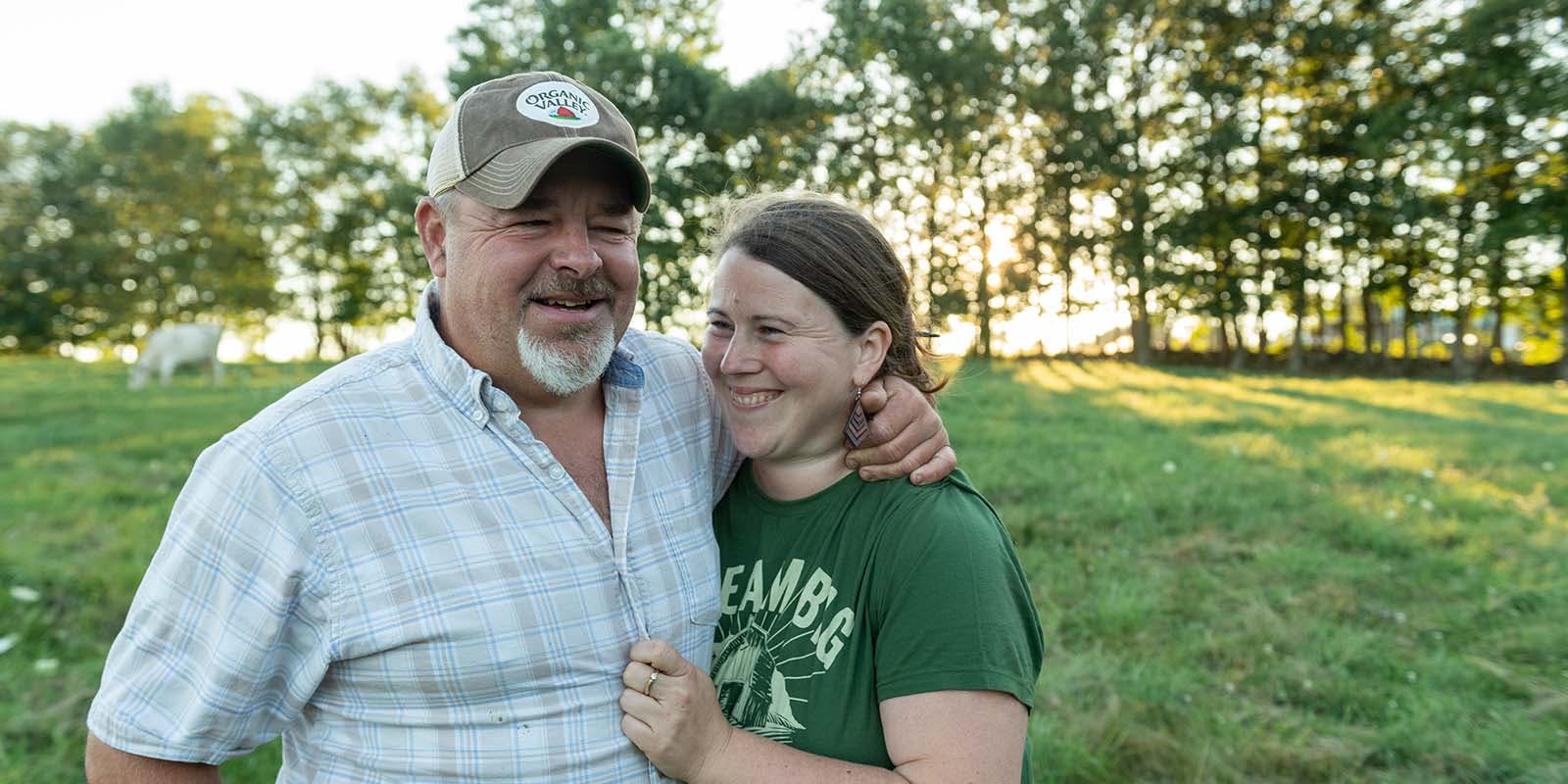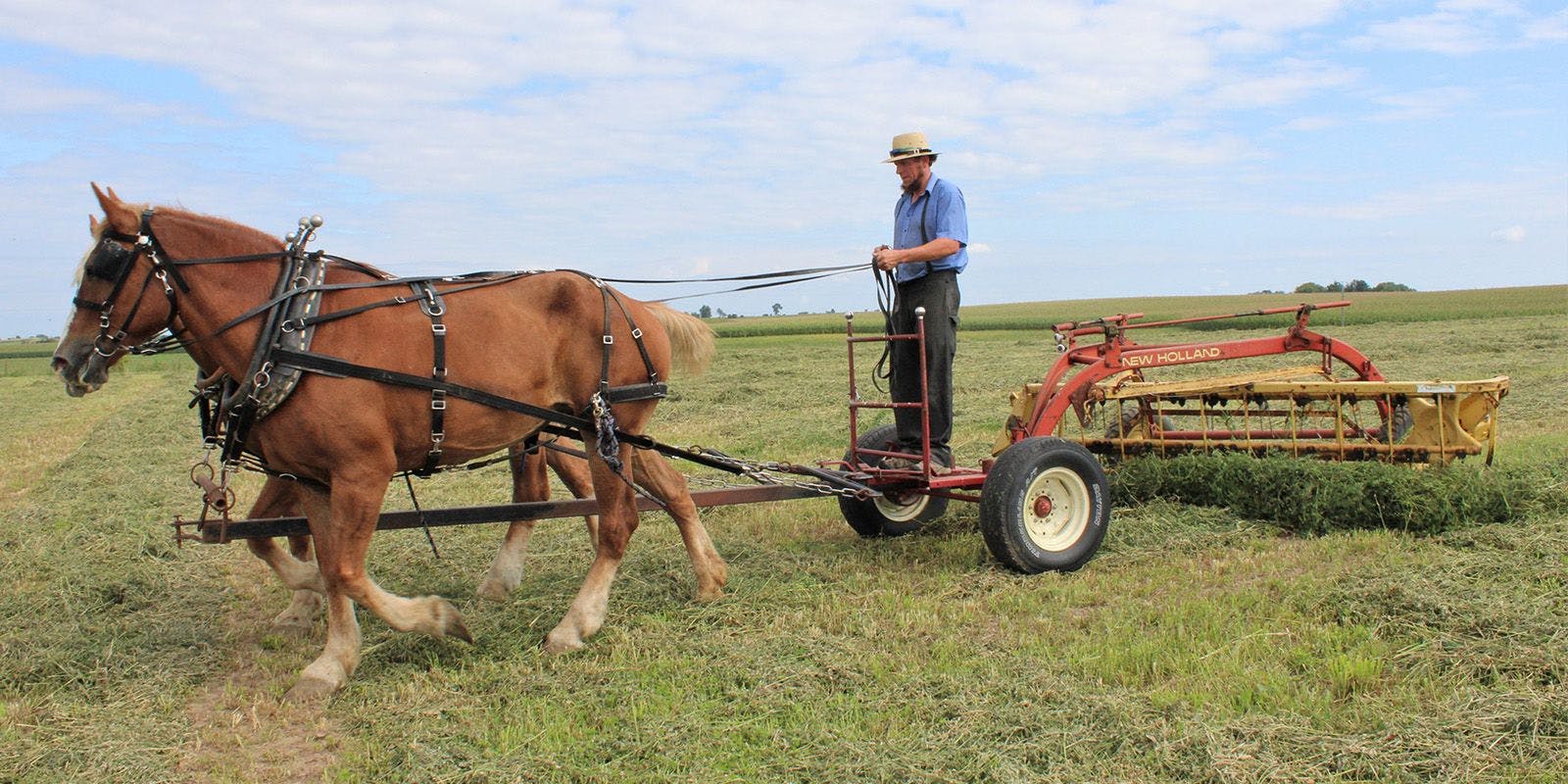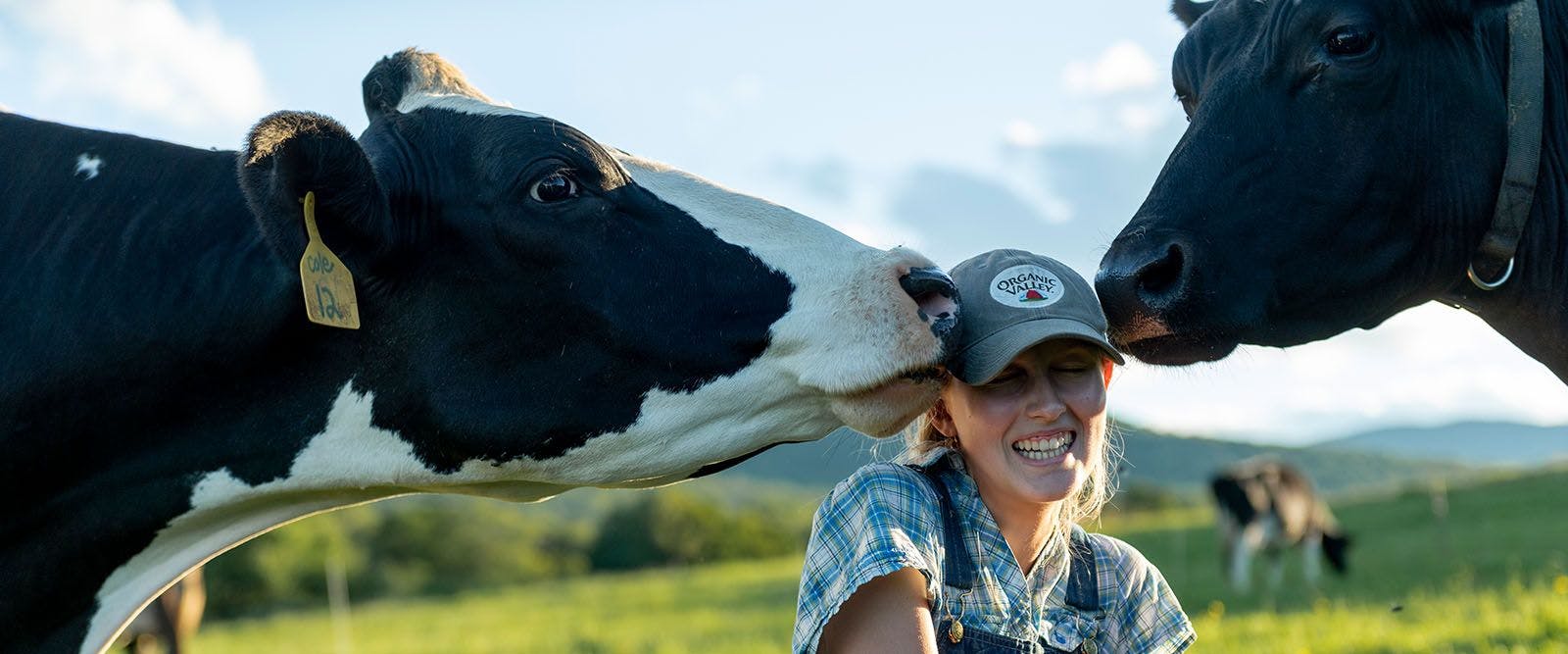
Rooted
Why Are Small Family Farms Disappearing Across the United States?
Maine Farmland Trust is a member-powered nonprofit that protects farmland, supports farmers and advances the future of farming. The trust has helped protect thousands of acres of farmland and supported hundreds of farmers. We reached out to the trust's president and CEO, Amy Fisher, to share reasons why family farms are disappearing:
Small Farms Can’t Compete with Large Farms
Consolidation of farms is a trend that has been occurring nationally over the past 40-plus years and is a driver for the loss of midsize farms, which are largely family owned. Consolidation occurs when large farms acquire land that formerly belonged to smaller ones.
This trend is partly driven by government policies that have favored larger farms due to the efficiencies and advantages that come with economies of scale — more food can be grown less expensively by a small number of very large farm operations.
However, as farms grow larger they also tend more toward mass production and monoculture, with all of the negative environmental challenges and disconnection from local markets and communities that come with those practices. As a result, more land is taken up by a smaller number of larger and larger farms that provide less and less benefit to our communities.
The specific economics of the industries in which farms operate — dairy, corn, potatoes, hay — are also driving factors in the viability of family farms. It is inherently more difficult for farmers to be successful when producing commodities versus producing foods that have special markets or provide extra value to consumers that they are willing to seek out — especially when they are smaller, and especially when costs are rising as they are right now.
Small- and medium-sized farms don’t benefit as much from efficiencies and find it very hard to compete against larger farms that have consolidated a lot of land because every input is more expensive for the small- and medium-sized farm.
Working Closely to Keep Farms Viable
Maine Farmland Trust (MFT) works with a network of hundreds of farms that our stewardship team visits each year. Those annual visits include a conversation with farmers about how they are doing and how they are thinking about the viability of their farms in the long term.
In 2022, farmers in our network reported rising costs, finding employees, navigating succession planning, adapting to climate change, having a supportive community and the rising threat of chemical contamination as some of their top challenges.

Malcolm and Marilyn Turner are shown at their organic farm in Maine in 2022.
Farmers Face Retirement Challenges
Navigating succession planning is a perennial challenge for an aging farmer population. At an average age of 58 years, many farmers are nearing retirement. While the average age of farmers who own Organic Valley is 48, there are still challenges figuring out who takes over the farm next for many families. However, because many farmers’ wealth is primarily held in their land and in their farm businesses, there is no easy way to stop working and tap into those funds.
Retiring often requires selling the farm, which is especially challenging when there may be no next generation in the family that is ready and willing to take over the farm. The complicated mix of family dynamics, the business transition, the legal, tax and estate planning implications and the emotional impact of a big transition means that many farmers put off making plans and farm for as long as they are physically able.
This reluctance to plan for succession and the lack of resources to help farmers tackle the complicated transition decisions put farms at risk of falling out of agriculture or of being purchased and consolidated into a larger farm.
MFT and other organizations like ours can help farmers connect with incoming farmers, help farmers use tools such as easements that can compensate them for protecting their land from development and help ensure that it stays in agriculture, provide technical assistance with long-term business planning, and by connecting farmers with experts and resources that can help with succession. However, the need is vast and in states like Maine there is no funding available for this type of work.

A hay rake is shown at an organic family farm in Wisconsin.
Inflation on Farms and Access to Land
Rising costs and finding employees are newer additions to the list of challenges that come directly out of pandemic demographic and economic trends. Inflation hits farmers hard and small to midsize farms harder, and most farmers don’t have the ability to simply increase prices on their products.
At the same time, many rural areas have been experiencing a real estate boom since the beginning of the pandemic, driving up the cost of land and housing, impacting established farmers and aspiring farmers alike. As such, farms are at risk of passing out of agriculture and being converted into house lots or other development designed to serve the influx of new people with different sources of wealth.
The growing population of people pursuing remote work in rural settings is positive as it is bringing new consumers who prioritize buying from local farms out to rural communities, but it’s also challenging because these new residents are totally changing rural housing and land markets.
The high demand for rural real estate makes it harder for established farmers to expand their land base, makes scarce affordable housing options for farm employees, and makes it increasingly difficult for incoming farmers to access land.
Many established farms in Maine are struggling to find employees — as are employers everywhere. Farming is typically a lower-wage job, and although many farms have done everything they can to offer competitive farm wages and other benefits, potential farm employees often cite the scarcity of affordable housing options in rural areas and high cost of living as reasons they can’t afford to work on farms.
There are farms in Maine that have ceased operations in recent years due to the inability to find employees, and other farms who have made big decisions to invest in housing to retain employees.

A nice day to put hay in the barn at the Klaphake’s organic farm in Minnesota.
Significant Start-Up Costs and Cashing Out
Farmland and housing affordability issues also greatly affect incoming farmers, many of whom are first-generation farmers without access to family land. Even prior to the pandemic-fueled rural real estate market boom, the National Young Farmers Coalition cited access to farmland as the single biggest barrier for young farmers, who often lack the ability to capitalize the significant start-up costs of farming: good land, housing, equipment, infrastructure, etc.
These start-up costs have only continued to increase, and are frequently compounded by additional barriers, as beginning farmers tend to be a more diverse group and many face discrimination at many entry points to farming.
Older farmers who haven’t made succession plans are more likely to choose a time like this as an optimal time to cash out and move into retirement due to the appreciation of their land values, even if they would prefer for their land to stay in agriculture.
All of these challenges underscore the need to invest now in the farmland and farmers that will feed our communities in the future. Organizations like MFT need to think creatively to help provide more on-ramps to farming and access to farmland for a greater diversity of farmers and think about taking a more active brokering role to match older, retiring farmers with incoming farmers that need access to land. Successfully making and supporting these matches will help keep more family farms as family farms — even as the families look new and different.

Organic Valley farmer Mike Moody at his organic dairy farm in Maine.
Environmental Crisis and Extreme Weather
Adapting to climate change and the rising threat of chemical contamination are challenges that speak to the extraordinarily high level of risk that farmers take on with very little public safety net or supports other than the help of other family members and friends, despite their service to the wider community.
In Maine, we are seeing increasing numbers of families looking to relocate their farm operations here after experiencing climate change-related environmental crisis or extreme weather events in other parts of the country.
Farmers are quickly needing to adapt to more unpredictable and severe weather. This June was the wettest season on record in Maine, and farmers are seeing impacts like delayed harvests — including the hay needed to sustain livestock for the rest of the season — and crop loss from rot. Other areas of the Northeast, like Vermont and New York’s Hudson Valley, are currently experiencing extreme flooding from a single storm.
Exploring new ways of farming that build soil capacity to hold more water and withstand drought, for example, can be expensive, time-intensive and can make running a successful farm that much more difficult.
Forever chemical contamination is another emergent environmental crisis that threatens farm viability. While not yet well known outside of Maine, New Mexico and Michigan, chemical contaminants that are manufactured for uses such as waterproof and fire-safe coatings, have been introduced to farmland nationwide as part of state initiatives to dispose of waste.
As awareness of this issue continues to grow and as consumers demand clarity on what is in their food, contaminants will be discovered on more farms and in a greater portion of the nation’s food supply.
Both the impacts of climate change and chemical contamination of land and water have a disproportionate impact on farmers, whose businesses are tied to the land and who already juggle a number of unpredictable environmental variables every season.
This risk and uncertainty bring us to why farmers call out needing a supportive community as a critical challenge that they face.
Coming Together to Support Farmers
In Maine, when the forever chemical crisis hit, farmers rallied to support one another, and the nonprofit community and state agencies were right there with them.
Together we passed legislation to create safety net funding for farmers experiencing chemical contamination to make sure that they have the supports they need while they figure out how to pivot their businesses and produce safe products again.
Consumers were partners and a critical part of this effort — they stepped up to support local farms with their purchasing, with their donations, with their voting and advocacy, and with their attention and interest. Having people and businesses in the community that care about and prioritize family farms makes a huge difference to keep family farms a part of the landscape that we can all enjoy.
Amy Fisher is Maine Farmland Trust president and CEO. The trust's goal is to protect Maine farmland and to revitalize Maine’s rural landscape by keeping agricultural lands working and helping farmers and communities thrive.
Related Articles
- Tags:
- food & farming policy,
- organic news














